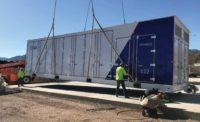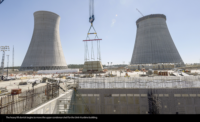Xcel Energy has become the first utility to commit to 100% clean energy. The utility’s announcement is part of a wider transformation that appears to leave conventional power plants in the dust, but according to analysts at investment research firm SSR, the prospects for building natural gas power plants are not as bleak as they might appear.
For the past several years, renewables have outpaced conventional generation. In 2017, renewables accounted for 55% of the 21 GW of new generation built in the U.S., the fourth consecutive year they comprised more than half of newly built power capacity, says the Energy Information Administration (EIA).
Xcel’s announcement was not out of the blue. The Minneapolis-based utility company has long been a leader in signing power purchase contracts for renewables, and this summer Xcel said it would close two of its coal plants. Xcel didn’t pledge to use 100% renewables, but instead said it would consider using carbon-capture systems on gas or coal plants.
Still, the rising tide of renewables, combined with flat demand for power, is responsible for the hit that many companies that make and build gas-fired power plants have suffered in recent years.
In October, General Electric Co. slashed its dividend, largely because of lagging sales of gas turbines, and announced a $22-billion write-down for its power division. In November, design-builder AECOM cited lower volumes for power plant design and construction as one factor in the poor performance of the company’s construction business, and said that it planned to exit the market for building fixed-price, combined-cycle gas power plants (ENR 11/19-26 p. 17).
“Load growth is anemic or low since the Great Recession and that limits the opportunities,” Andrew Wittmann, senior research analyst at Baird Equity Research, says. “Companies have lost money across the board.”
But, in their new review of data from the EIA, analysts Hugh Wynne and Eric Selmon at Stamford, Conn.-based SSR see a recovery coming for gas-fired power plants. While they acknowledge the slowdown in power demand and believe it will continue, Wynne argues that a recovery in gas-fired generation does not depend on a return to more robust power demand. “The need to offset retirements will far outweigh the need to add new net capacity to meet growth in load,” he says.
Analyzing the EIA data, Wynne and Selmon found that the most important factor in assessing the gas turbine market is the cyclicality of capacity additions. Their report says 80% of operating coal-fired capacity was built between 1967 and 1986. About 90% of nuclear capacity was built from 1971 to 1990, and about 50% of the existing gas turbine fleet was built between 2000 and 2009.
“These periodic construction booms will predictably give rise to echo booms as the capacity installed during these surges reaches the end of its useful life,” Wynne and Selmon say.
They note that the average retirement age for steam turbines is about 60 years, while gas turbines typically retire after 35 years of service. That, the analysts say, suggests that average annual retirements of U.S. generation capacity will more than double by 2035, rising from an average of about 17 GW annually between 2021 and 2025 to 21 GW between 2026 and 2030, 34 GW between 2031 and 2035, and 37 GW between 2036 and 2040.
Gas turbine orders will have to rise to fill that gap, Wynne says, rising from 31 GW in 2020 to 49 GW in 2025 and 70 GW in 2030.
Even under a scenario that poses the greatest risk to their thesis—a 50% increase in wind and solar capacity additions combined with the use of electric storage as peaking capacity and a 50% cut in coal-fired plant additions—Wynne and Selmon do not anticipate “a significant reduction” in the rebound of the gas turbine market.
While a boom in turbine orders is good for the construction industry, Wynne also warned that as power plants retire, many sites are likely to be reused and that implies savings on substations, transmission link and cooling towers, and lower overall construction costs.





Post a comment to this article
Report Abusive Comment